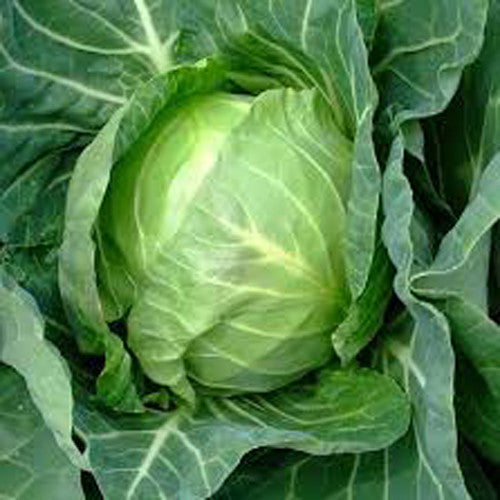Cabbage – Patta Gobhee – Traditional desi variety with tight green heads
Propagation
Propagate by seed. Seeds, which germinate within four to seven days, can be started indoors in April and transplanted after about a month of indoor growth.
Transplant the young plants to their final growing position when plants have five or six true leaves, setting the lowest leaves at ground level. Water well the day before moving, firm in well after transplanting and ‘puddle’ in the plants with plenty of water (this means filling the hole with water several times before adding soil).
How to Grow in Pots
Make sure to sow the cabbage seeds ¼ to ½ inch deep. After you sow them, keep them moist and thin them out to desired spacing once they grow. Make sure you fertilize your plants when growing cabbage, especially after transplanting. Then add nitrogen or organic fertilizer as well when the cabbage is half grown. This helps them mature better. Make sure the soil is moist throughout the growing season so your cabbage produces better heads.
Soil
Cabbage grows best in soil with a lot of organic matter, so mix in a 2-3” (5-8cm) layer of good garden compost or composted manure when you prepare the bed.Growing cabbage pulls a lot of nitrogen from the soil, so build organic fertilizers into the soil when you plant. Cabbage thrives in a pH range of 6.5-7
Spacing
Sowing Season
Harvesting
Pests and Diseases
A lot of pests and diseases can ravage your cabbage plants. Pests include cabbage worms, cabbage loopers, midges, flies, aphids and many more. Diseases are caused by fungi, bacteria and viruses













